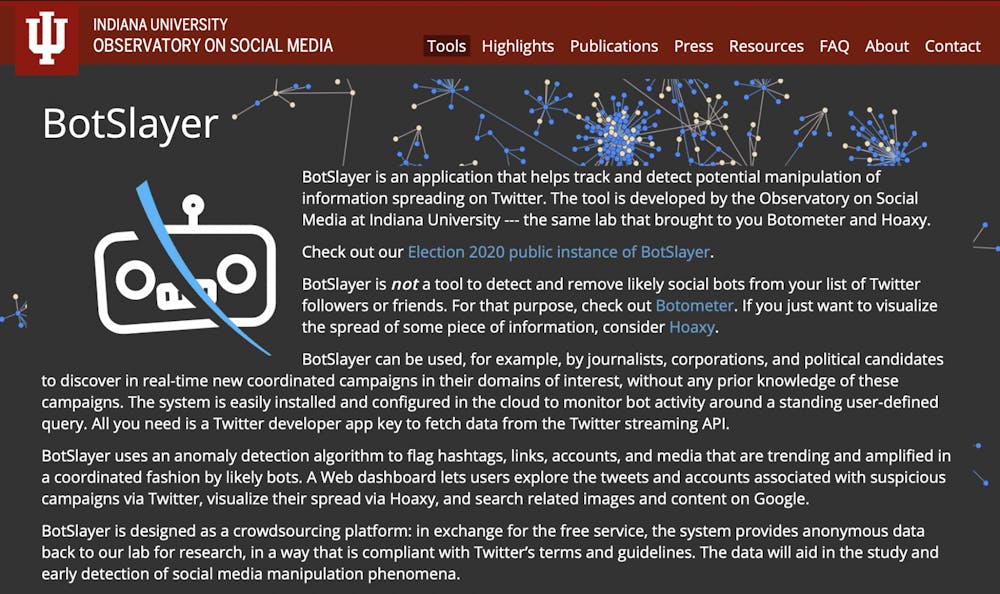With the 2020 presidential election less than a month away, the IU Observatory on Social Media developed a tool called BotSlayer to stop the spread of disinformation and false narratives.
BotSlayer is an all-in-one application that scans social media in order to determine if a message is being pushed and popularized by bots, according to a News at IU release. The program can be downloaded onto most laptops and Mac operating systems. BotSlayer allows users to more easily monitor trends meant to manipulate social media ahead of the election.
“BotSlayer allows users to look forward,” lead software engineer Ben Serette said. “The thing that’s special about it is it will help identify new trends that you weren’t necessarily looking for.”
BotSlayer is an independent tool for users to analyze their own data and set their own search limits, and was developed with journalists, researchers and scientists in mind, Serette said.
BotSlayer allows users to see manipulation trends as they occur on Twitter, using automated or individualized settings. The observatory has also developed a pre-set version of the program, which has automated settings to track election-related activity on Twitter, including hashtags, individual tweets and users.
People can download BotSlayer, then create a developer account on Twitter, which will allow the program to directly connect with data provided by Twitter, Serrette said. Once the program is set up and linked, users can set their own search terms and limits, and data will be collected from Twitter as it becomes available. This data is all compiled on BotSlayer’s interactive dashboard, and can be analyzed to detect patterns.
“We wanted to make it easy to install so reporters and people without technical backgrounds could use it,” Serrette said.
The current version of BotSlayer can only collect data from Twitter. However, it can use Twitter to detect trends through users and hashtags and then track these trends across other websites, said Filippo Menczer, director of the Observatory on Social Media.
The goal of the program is to make it easier for the general public to become aware of how social media can be influenced and manipulated, Menczer said. Bots can be created by people who are paid or sponsored by companies or foreign actors, he said.
“We wanted to make it easy for reporters and scientists to see manipulation of information as it happens,” Menczer said.
Through analysis using the program, researchers at the observatory have seen false news and propaganda campaigns spread by Russian and ISIS-affiliated Twitter accounts, Menczer said. Twitter is able to automatically detect and ban these threats but domestic-created bot campaigns are not found as easily by the platform, he said.
“We discovered that we are all vulnerable to manipulation through social media,” Menczer said. “The more we rely on social media for information and news value, the more vulnerable we are to manipulation through disinformation.”






